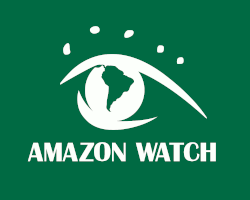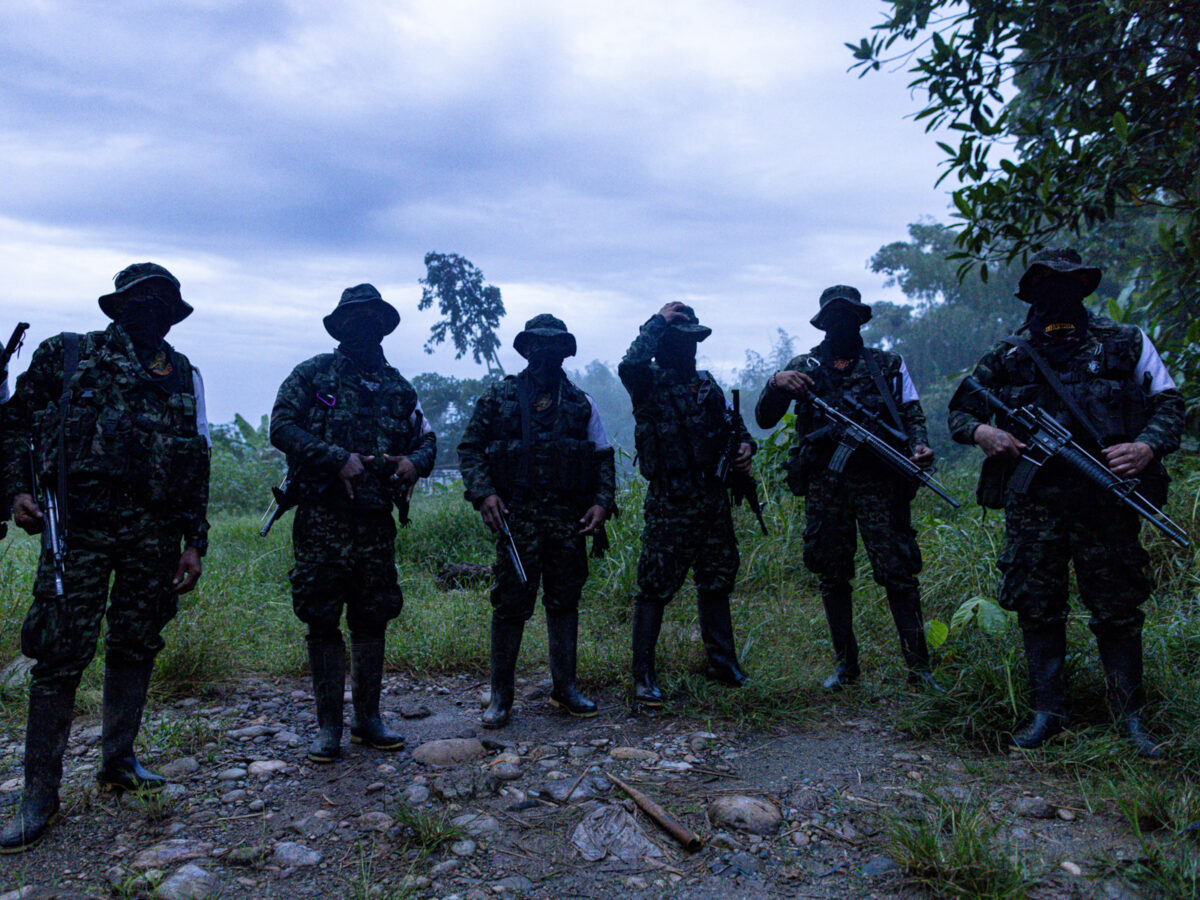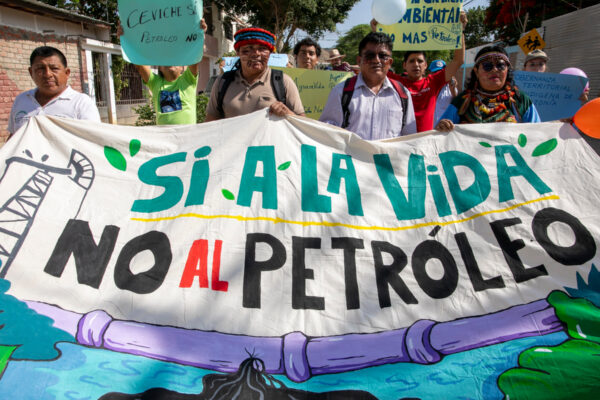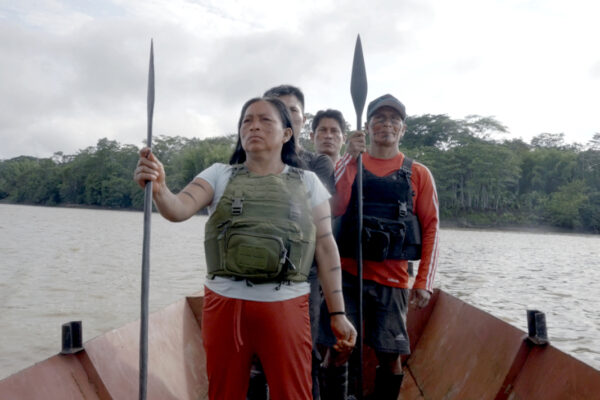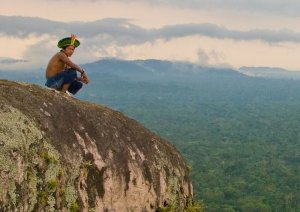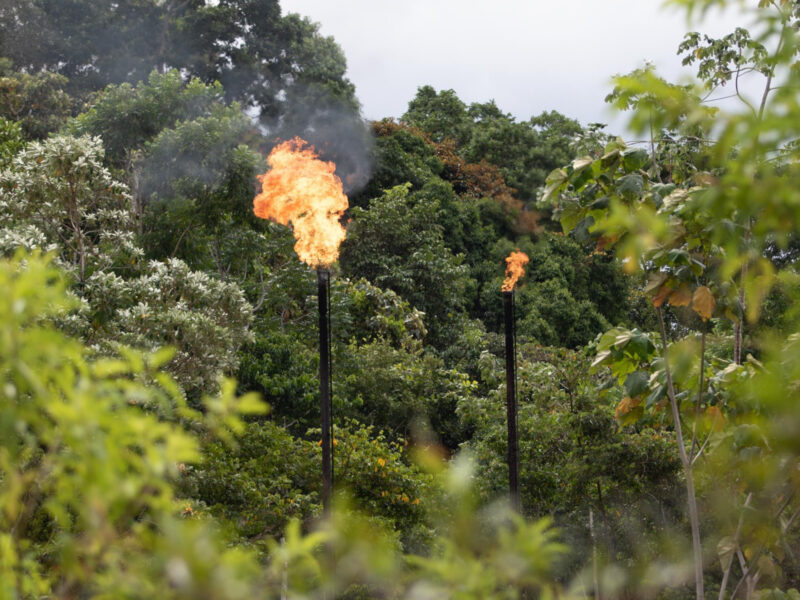In the heart of the Colombian Amazon, criminal organizations have supplanted the state as the ultimate authority. Recently, during our visit to the heart of La Paya National Park in Putumayo – bordering Peru and Ecuador – the pristine wilderness no longer covered the entire park. Coca fields stretched along waterways, and blue fuel drums hidden near riverbanks signaled the presence of clandestine drug labs.
Within La Paya’s more than 400,000 hectares, an interconnected network of streams and lagoons, once surrounded by pristine nature, has been left unprotected since 2019, when armed groups began blocking park authorities and other state institutions from entry. As global demand for cocaine rises and gold prices reach new highs, organized crime has become a direct threat to Amazon conservation.
With presidents and governmental delegations from eight Amazonian countries meeting this Friday, August 22, the intertwined crisis of public security, environmental crime, climate change, and human rights should be a priority on the summit agenda. Two years ago, at the Presidential Summit in Belém do Pará, a joint statement declared that combating organized crime would be a priority. A series of measures were agreed upon – but progress since then has been limited.
The conflict-ridden borderlands of Colombia, Ecuador, and Peru may be the worst example of what’s happening across the Amazon, with armed actors expanding control over the jungle and its natural resources. Since 2020, Putumayo has seen more than two dozen massacres and multiple murders of social leaders, while escalating violence in Ecuador includes attacks on state forces. On the Peruvian side, the government’s absence has granted criminals free rein. Conversely, for these very reasons, the triple border region could serve as a testing ground for regional cooperation in public security.
At the core of this criminal takeover lie governmental neglect, a lack of formal livelihoods, and abundant natural resources – a fertile ground for armed groups to recruit, prosper, and expand. Sporadic military campaigns, repressive strategies, and the absence of inclusive development proposals have done little to establish a rights-based government presence – and often have fueled cyclical violence.
Today, the dominant force in the triple border region of Colombia, Ecuador, and Peru is the Comandos de la Frontera (CDF), a criminal conglomerate composed of former FARC fighters, soldiers, paramilitaries, and recruits – mainly from Amazonian communities – operating as a criminal multinational. They lure local youth with monthly pay, control the cocaine economy, and extort illegal miners across all three countries.
In their drive to control coca cultivation, cocaine production and trafficking, and illegal gold mining, international borders no longer pose an obstacle – especially since they avoid confrontation with the state, as maximizing profits is their main goal. As a result, the CDF have crossed into both Ecuador and Peru, while criminal groups from Ecuador, such as Los Choneros and Los Lobos, have also entered the Amazon. Two other FARC dissident groups also contest control of the triple border region.
The environmental cost is severe. Coca plantations, illegal dredging, and unregulated cattle ranching are tearing apart the ecological heart of the Amazon. In areas like La Paya, Peru’s Nanay River, and Ecuador’s Punino River, deforestation and mercury contamination have reached alarming levels. Criminal actors decide land use based on profit, not preservation.
This form of governance operates through systematic control of daily life. Children and adolescents are recruited or coerced into membership. Indigenous leaders who resist are killed. Communities are forced to construct drug-trafficking infrastructure or attend mandatory meetings under threat of violence. Town by town, armed men monitor WhatsApp groups, inspect phones, and control movement. This is not a world of uncontrolled crime – it’s an alternate state.
In some areas, armed groups impose a twisted sense of order – punishing thieves and building roads and trails that slash through the jungle. But at what cost? From dozens of conversations with indigenous community representatives, rural leaders, members of the CDF, state officials, and environmental defenders, a grim picture emerges across these Amazonian borderlands.
Criminal proceeds are laundered through illegal gold mining, since “dirty gold” can easily enter legal supply chains with falsified documentation. Armed groups now have more money than ever to undermine governments, corrupt officials, recruit youth, and acquire weapons. Communities have become key assets – used as human shields, cheap labor, and tools for political legitimacy.
The silence and lack of action is overwhelming, with little to no agenda for development or security. Government officials say they feel powerless – some believe their superiors may serve criminal interests. Others say locals won’t even speak to them, as distrust is absolute.
The triple border region is now a geopolitical blind spot. And yet, it is also a critical battlefield in the global fight against climate change, drug trafficking, and authoritarianism.
The Amazon stands at a crossroads. Progressive presidents like Brazil’s Luiz Inácio Lula da Silva and Colombia’s Gustavo Petro promote environmental agendas. But with elections looming in 2026 in both countries, the window for action is closing. Meanwhile, Peru has advanced a legal framework that facilitates crime expansion, and Ecuador leans on militaristic and repressive approaches that fail to address the structural causes of violence.
Based on our research, four concrete steps could reverse this trend. First, Amazonian countries must implement the Belém declaration – coordinating information sharing and cross-border law enforcement focused on financial and environmental crime, operating on a “do no harm” principle. Second, governance and community economies must be strengthened as the cornerstone of security strategies, with guarantees for human rights and environmental conservation. Third, crop substitution programs in Colombia must move beyond promises – delivering real land titling and ensuring market access for farmers. Fourth, peace negotiations with groups like the CDF should proceed, but only under strict human‑rights standards, with community participation and protection for environmental defenders and regional leaders.
Without coordinated action and meaningful inclusion of local voices, the region faces escalating violence and irreversible damage to one of the world’s most critical ecosystems.
